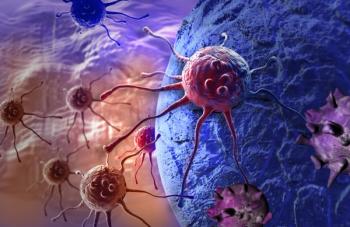
- ONCOLOGY Nurse Edition Vol 26 No 8
- Volume 26
- Issue 8
What's in a Number?
Cancer statistics do not overwhelm me as much as other calculations do. I think this is because I can imagine a human being connected to the rising incidences and changing trends within my chosen specialty.
Math, and everything associated with it, has always been my downfall. I’m not good at it and get easily frustrated by my inability to capture the abstract meaning of numbers. I need to put a label, a face, to numbers’ representation, and I struggle with my difficulty in doing this. But somehow, cancer statistics do not overwhelm me as much as other calculations do. I think this is because I can imagine a human being connected to the rising incidences and changing trends within my chosen specialty. Cases in point...
• One in four deaths in the US is due to cancer.[1] Sitting in my pew at church, I look across and ponder...of the 20 of us sitting here, 5 will die of cancer.
• Avoiding tobacco use and maintaining a healthy body weight are important prevention measures for cancer of the pancreas.[2] Look at the nurses attending the ONS Congress who go outside to smoke during breaks, and/or who are morbidly obese. Do they realize the personal health risk they are taking with their behaviors, or is the need to make lifestyle changes only considered with respect to their patients?
• Little is known about cancer survival among Hispanics, particularly how it varies by subgroup (ie, Mexicans, Puerto Ricans, Cubans, Central Americans).[3] How do we consider these subgroups in our communities? Do we ignore the individual risk and cultural factors and ethnic implications and just lump everyone together whose first language is Spanish? As a student and increasing appreciator of the multicultural mosaic of the American landscape, I must also anticipate a different paradigm of cancer care in the immediate future. As we become a global composite of peoples, we must appreciate the risks and implications of being a globally sensitive provider of oncology nursing care. Think in terms of these pressing realities[4]:
• More than 70% of new cases of, and deaths from, gastric malignancies occur in developing countries. Do you live in an area where there are immigrants from Eastern Asia, Eastern Europe, and South America?
• Half of all cases of, and deaths from, primary liver cancer occur in China. What proportion of your patient caseload is represented by immigrants from China?
• India, the most populous country in the world, accounts for nearly one-third of total cervical cancer deaths. What is the predominance of Indian women in your community?
• The highest rate of oral cavity cancers is found in Melanesia, South-Central Asia, and Central and Eastern Europe, and the incidence has continued to rise in Eastern European Countries such as Hungary and Slovakia. What is your patient representation like from these countries of origin? As we acknowledge the need to individually tailor our nursing care, we must consider risk, culture, and the possibility of prevention in our critical thinking. This will be a pressing imperative sooner than we may realize.
References:
References
1. Siegel R, Naishadham D, Jemal A: Cancer statistics, 2012. CA Cancer J Clin 62:10â29, 2012.
2. Simard EP, Ward EM, Siegel R, et al: Cancers with increasing incidence trends in the United States: 1999 through 2008. CA Cancer J Clin 62:118â228, 2012.
3. Pinheiro PS, Williams M, Miller EA, et al: Cancer survival among Latinos and the Hispanic paradox. Cancer Causes Control 22(4):553â561, 2011.
4. Jemal A, Bray F, Center MM, et al: Global cancer statistics. CA Cancer J Clin 61(2):69â90, 2011.
Articles in this issue
over 13 years ago
News of Noteover 13 years ago
Evolving and Expanding Treatment Options in NSCLCover 13 years ago
Current Treatment Options for Non–Small-Cell Lung Cancerover 13 years ago
A Patient With Tumor Lysis Syndromeover 13 years ago
Falls in Older Adults With Cancer: A Call to Actionover 13 years ago
Clinical Hypnosis for the Palliative Care of Cancer Patientsover 13 years ago
Contemporary Issues in NSCLCNewsletter
Stay up to date on recent advances in the multidisciplinary approach to cancer.































































































